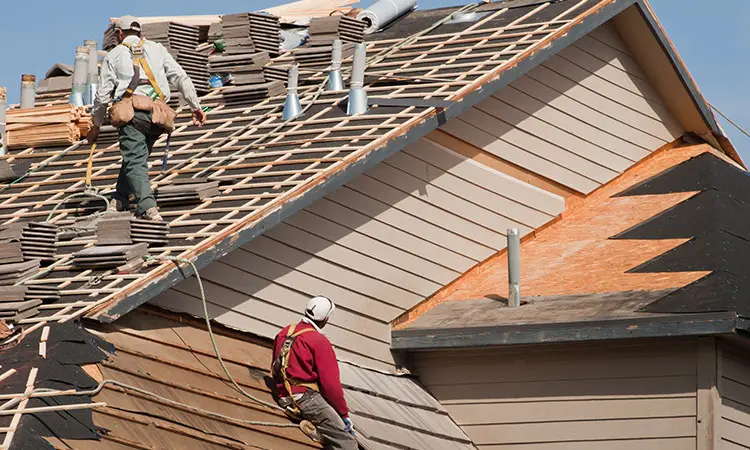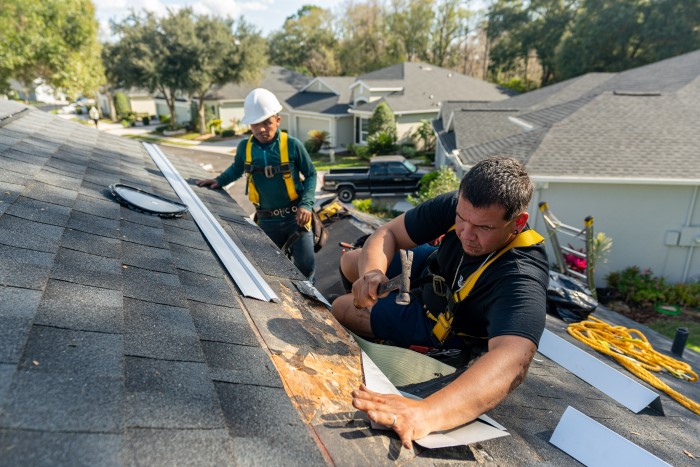Roofers Oahu: Expert Roof Installations and Fixes
Comprehending the Different Sorts Of Roofings: A Comprehensive Overview for Homeowners
In the world of homeownership, picking the appropriate roofing style is a decision that carries significant ramifications for both performance and aesthetic charm. With a variety of choices-- ranging from the standard gable to the modern level-- each kind provides one-of-a-kind benefits and obstacles that need to straighten with the home owner's ecological factors to consider and certain requirements. Understanding these distinctions not just help in making an educated option however also influences lasting upkeep and energy efficiency. As we explore the intricacies of various roofing system types, it becomes noticeable that dimension does not fit all; the ideal option may stun you.
Gable Roofings
Saddleback roofs, identified by their triangular shape, are amongst the most prominent roof covering styles as a result of their simplicity and efficiency in shedding water and snow. This style includes two sloping sides that satisfy at a ridge, permitting effective water drainage and reducing the danger of water accumulation. The steep pitch frequently connected with saddleback roofs boosts their ability to manage hefty precipitation, making them appropriate for numerous climates.
Along with their sensible benefits, gable roofings supply aesthetic adaptability. They can be adjusted to various architectural designs, from typical to modern homes. The style can additionally suit additional features such as dormer windows, which improve all-natural light and air flow in the attic room room.
Moreover, saddleback roofs supply adequate room for insulation, adding to energy efficiency. Property owners can pick from a range of roofing products, consisting of asphalt roof shingles, metal, and floor tiles, even more improving modification alternatives.
In spite of their advantages, saddleback roofs may require extra support in areas susceptible to high winds or heavy snowfall. In general, the gable roofing stays a preferred option due to its blend of functionality, resilience, and visual allure.
Apartment Roofs
Level roof coverings are usually identified for their minimal style and useful applications, particularly in industrial and commercial setups (oahu roofing). These roofings feature a horizontal or virtually straight surface, which permits simple building and versatile room use. While they may do not have the visual appeal of pitched roofs, level roofing systems offer countless advantages, specifically in metropolitan environments where taking full advantage of space is critical
One of the key benefits of level roofing systems is their accessibility. Home owners can utilize the roof covering area for numerous functions, such as roof yards, terraces, or photovoltaic panel installations. Additionally, flat roofs are commonly more cost-efficient to preserve and set up compared to their sloped counterparts, as they need less products and labor.
Common materials used for flat roofing systems include built-up roof (BUR), customized asphalt, and single-ply membrane layers, each offering unique advantages. On the whole, level roofs serve as a functional and adaptable choice for numerous property owners and services alike.
Hip Roofings
Hip roofing systems are identified by their sloped sides that assemble at the top, developing a ridge. This design stands out from saddleback roofs, as all four sides of a hip roofing system slope downwards toward the wall surfaces, giving a much more steady structure. The angle of the inclines can differ, enabling flexibility in architectural looks and functionality.
One of the primary benefits of hip roofings is their capability to endure hefty winds and negative climate condition. The sloped surface areas allow better water drain, minimizing the risk of leakages and water damage. In addition, hip roofings provide increased attic room space, which can be made use of for storage or also transformed into habitable areas.
Nonetheless, constructing a hip roof covering can be a lot more costly and intricate than easier roof kinds, such as gable roofing systems. The additional product and labor included in creating the inclines and ensuring correct structural stability can lead to higher expenses. Regardless of these disadvantages, many home owners favor hip roofs for their durability, aesthetic allure, and possibility for energy performance.
Mansard Roofings
Mansard roofing systems, often recognized by their one-of-a-kind four-sided design, attribute two slopes on each side, with the reduced slope being steeper than the top. This building design, stemming from France in the 17th century, is not only visually appealing but practical, as it takes full advantage of the useful room in the upper floors of a building. The steep reduced incline permits even more clearance, making it an optimal choice for attics or explanation lofts, which can be converted into living areas.
Mansard roofings are identified by their convenience, accommodating various architectural styles, from traditional to modern. They can be constructed with different materials, including asphalt shingles, slate, or metal, providing property owners with a variety of choices to fit their budget plans and preferences. Furthermore, the style enables for the combination of dormer windows, improving natural light and air flow in the upper levels.
However, it is necessary to consider the potential downsides. Mansard roof coverings might need more upkeep as a result of the intricacy of their style, and their steep inclines can be testing for snow and rainfall runoff. In general, mansard roofs combine style with usefulness, making them a preferred option among home owners looking for unique architectural attributes.
Dropped Roofings
As property owners increasingly look for simplicity and performance try this website in their building styles, dropped roofings have actually become a preferred choice. Defined by a single sloping plane, a shed roof covering presents a minimal aesthetic that complements different home styles, from contemporary to rustic.
One of the key advantages of a shed roofing is its straightforward building, which often equates to decrease labor and material expenses. This layout permits efficient water drain, reducing the risk of leaks and water damages. In addition, the Website vertical slope supplies enough space for skylights, enhancing natural light within the inside.
Lost roofs also provide convenience in terms of usage. They can be efficiently incorporated right into additions, garages, or outside frameworks like structures and sheds. Furthermore, this roof style can fit different roof covering products, consisting of steel, asphalt shingles, or even eco-friendly roofings, straightening with eco-friendly efforts.
Nevertheless, it is necessary to take into consideration local environment problems, as hefty snow lots might demand changes to the roof's angle or framework. On the whole, lost roof coverings provide a functional and visually pleasing choice for property owners wanting to maximize performance without compromising design.
Conclusion


Gable roofs, characterized by their triangular shape, are among the most preferred roofing designs due to their simplicity and performance in dropping water and snow. oahu roofing. The high pitch typically linked with gable roofings boosts their capacity to take care of heavy rainfall, making them suitable for various climates
While they may lack the visual allure of pitched roofs, flat roof coverings use numerous advantages, particularly in city atmospheres where making the most of room is crucial.
